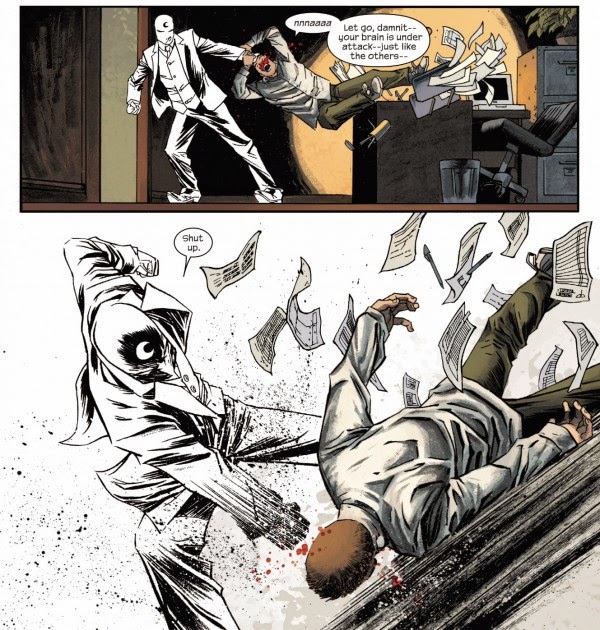 |
| Masterpiece |
After reading the previous Yeah Dude Comics (Future Masterpiece) left a bitter taste, I decided to wait a few days before cautiously diving into Box Brown's New Physics. I haven't read Brown's Andre the Giant yet, but I found his newest output from Retrofit Comics (the inprint he runs) to be quite phenomenal. I've thoroughly enjoyed Number 1 and Number 2. I wasn't expecting this pink mini comic to pack such a punch, let alone be one of my favourite comics of the year. Brown shows off his mastery of design, colour and storytelling and manages to create a poignant commentary on social media and it's ultimate consequence in this comics.
New Physics tells the story of Vern, a "desperate hedonist" who turned her life around through social media. She became a sort of social media guru and used it to create "New Physics", a sort of religious cult. Her following grows steadily until a fateful incident that ends the book on a surprisingly grim note. Do not be fooled by the lavish pink colour, this story is dark and disturbing.
 |
| Social media consumption through inhalation |
The story is a very interesting commentary on the modern use of social media. Brown imagines a futuristic world where everyone is connected through these see-through helmets that allows them to remain online at all times. Not only do the people of this world use social media constantly, they live and literally breathe it in. Their helmet emits these gases that allows them to be fully immersed in the connection. Imagine a food blog where you can not only see the food, but also inhale it's aromas.
The future setting and the rise of Vern also allows us to wonder if this is the logical end of Twitter and Facebook connections. If we are all connected and are all followers of Person X, reblogging, reposting, discussing Person X's opinions and thoughts, are we not preaching Person X's gospel? Is it that strange a concept to believe that we may see the rise of an organized religion purely through social media? In a striking moment, Vern addresses one of her "High priests" by telling him that he "is truly one of New Physics' Top 10 commenters". A modern religion for a modern age.
Brown even manages to criticize the mindless consumption of false remedies and promises of salvation promoted by cult-like religions. The idea that, by spending,a bit more money, you'll somehow be more in tune with God is ludicrous. Vern capitalizes on this hawkish behaviour. As a follower, you can even spread the gospel yourself. BUY IT NOW: New Physics™ Apparel, New Physics™ Rebalancer. Buy the Concentration Tools of the Godhead. Find redemption through consumption of the New Physics branded products. What would a Torso Reimaginer do anyway?
.jpg) |
| Colour & Depth |
Brown manages to make very efficient use of a very limited palette by using only black, grey, white and pink. The bright pink is used to create depth for the building or numerous vistas we see whether they be exterior or interior. It is also the colour of texts in social media (as in the previous image). It's also used as a stylistic element in clothing and on the New Physics™ Torso Remimaginer. It is a truly brilliant use of colour.
New Physics managed to become one of my favourite comics of 2014. I'll gladly read it over and spread the New Physics light to all. I'm a New Physics convert.
For further discussion, I've placed some articles on Social Media and Religion below should you wish to delve deeper into the very real possibility of the emergence of a web-based religion.










